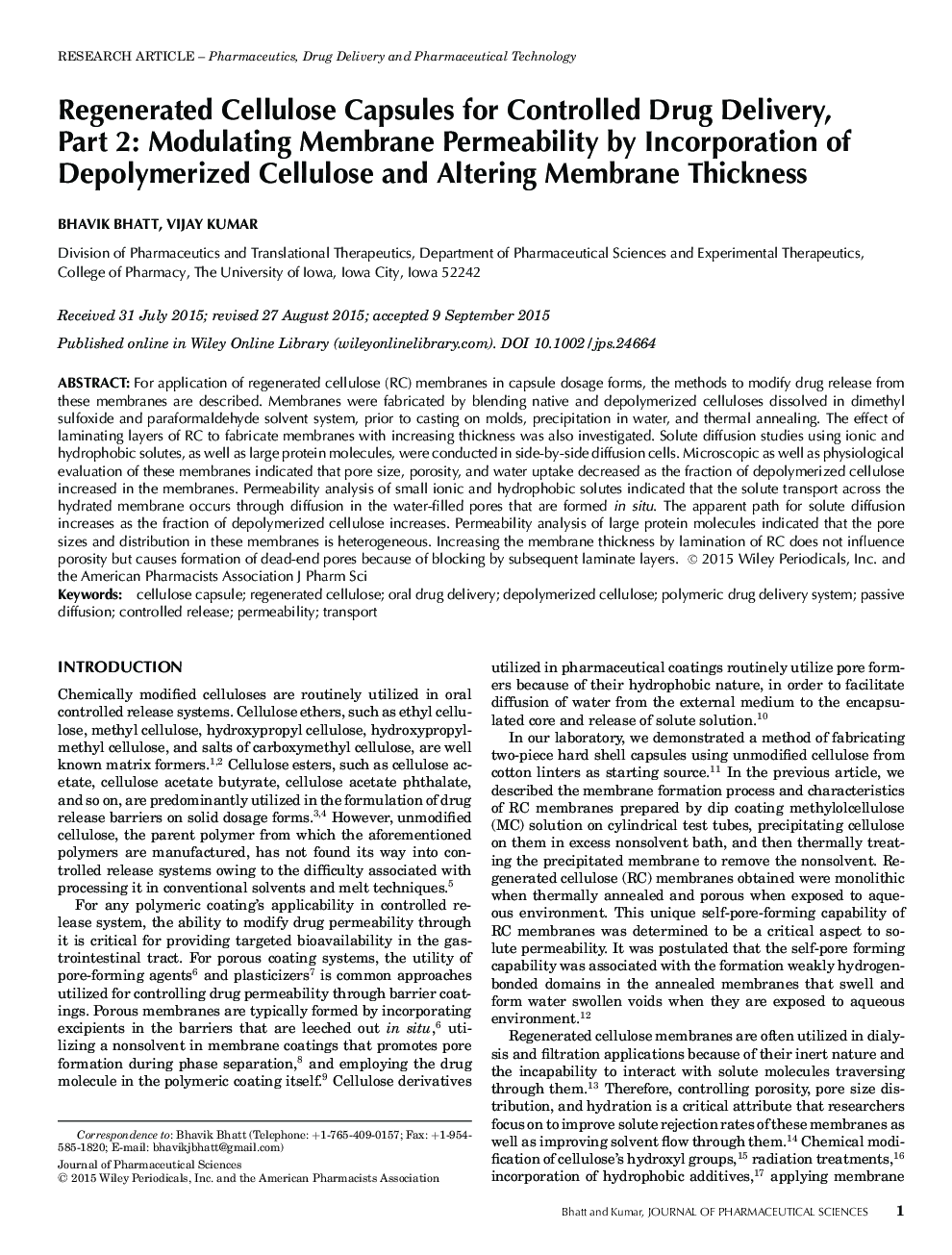| Article ID | Journal | Published Year | Pages | File Type |
|---|---|---|---|---|
| 10161952 | Journal of Pharmaceutical Sciences | 2015 | 10 Pages |
Abstract
For application of regenerated cellulose (RC) membranes in capsule dosage forms, the methods to modify drug release from these membranes are described. Membranes were fabricated by blending native and depolymerized celluloses dissolved in dimethyl sulfoxide and paraformaldehyde solvent system, prior to casting on molds, precipitation in water, and thermal annealing. The effect of laminating layers of RC to fabricate membranes with increasing thickness was also investigated. Solute diffusion studies using ionic and hydrophobic solutes, as well as large protein molecules, were conducted in side-by-side diffusion cells. Microscopic as well as physiological evaluation of these membranes indicated that pore size, porosity, and water uptake decreased as the fraction of depolymerized cellulose increased in the membranes. Permeability analysis of small ionic and hydrophobic solutes indicated that the solute transport across the hydrated membrane occurs through diffusion in the water-filled pores that are formed in situ. The apparent path for solute diffusion increases as the fraction of depolymerized cellulose increases. Permeability analysis of large protein molecules indicated that the pore sizes and distribution in these membranes is heterogeneous. Increasing the membrane thickness by lamination of RC does not influence porosity but causes formation of dead-end pores because of blocking by subsequent laminate layers. © 2015 Wiley Periodicals, Inc. and the American Pharmacists Association J Pharm Sci
Keywords
Related Topics
Health Sciences
Pharmacology, Toxicology and Pharmaceutical Science
Drug Discovery
Authors
Bhavik Bhatt, Vijay Kumar,
